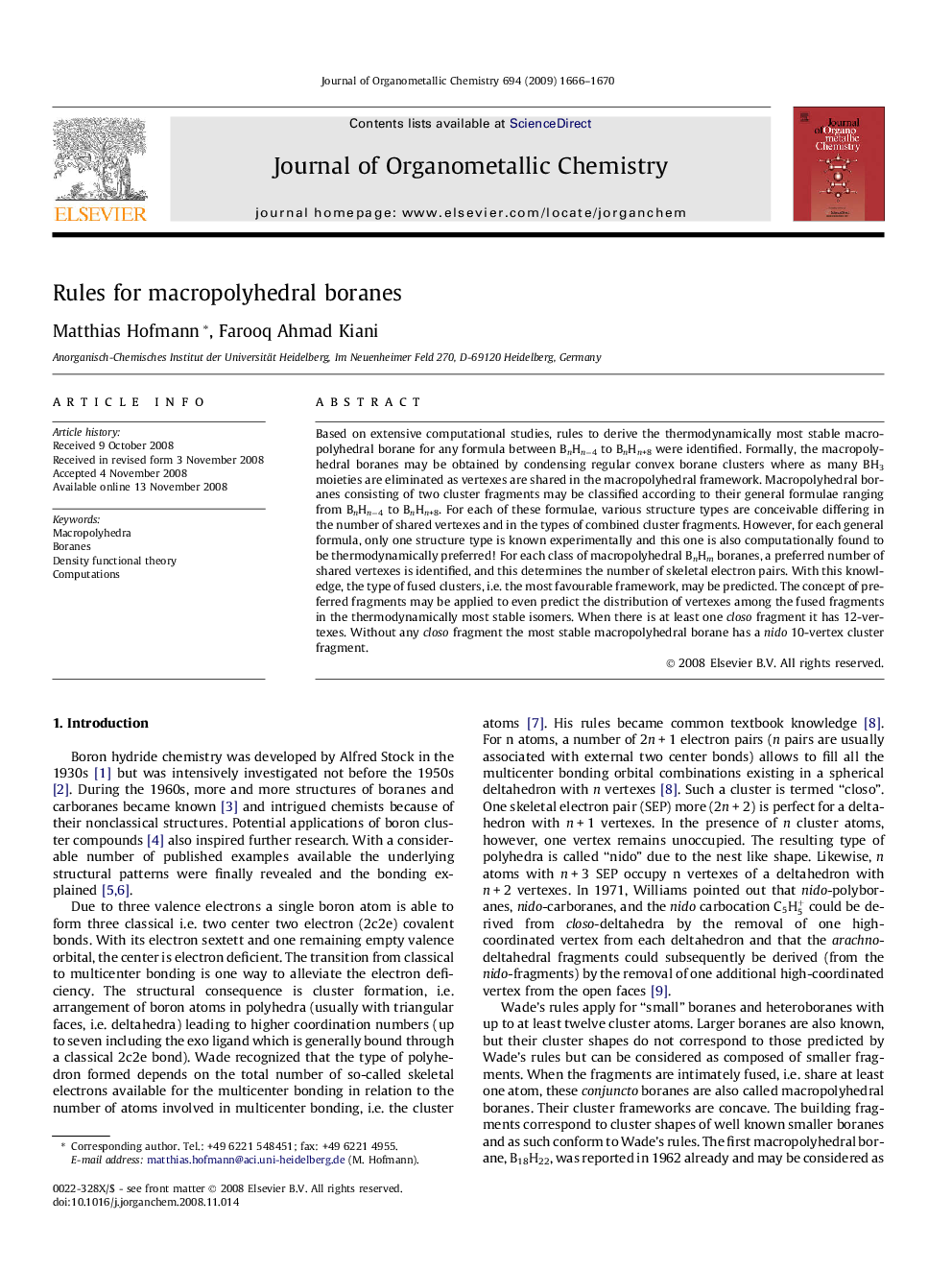| Article ID | Journal | Published Year | Pages | File Type |
|---|---|---|---|---|
| 1324571 | Journal of Organometallic Chemistry | 2009 | 5 Pages |
Based on extensive computational studies, rules to derive the thermodynamically most stable macropolyhedral borane for any formula between BnHn−4 to BnHn+8 were identified. Formally, the macropolyhedral boranes may be obtained by condensing regular convex borane clusters where as many BH3 moieties are eliminated as vertexes are shared in the macropolyhedral framework. Macropolyhedral boranes consisting of two cluster fragments may be classified according to their general formulae ranging from BnHn−4 to BnHn+8. For each of these formulae, various structure types are conceivable differing in the number of shared vertexes and in the types of combined cluster fragments. However, for each general formula, only one structure type is known experimentally and this one is also computationally found to be thermodynamically preferred! For each class of macropolyhedral BnHm boranes, a preferred number of shared vertexes is identified, and this determines the number of skeletal electron pairs. With this knowledge, the type of fused clusters, i.e. the most favourable framework, may be predicted. The concept of preferred fragments may be applied to even predict the distribution of vertexes among the fused fragments in the thermodynamically most stable isomers. When there is at least one closo fragment it has 12-vertexes. Without any closo fragment the most stable macropolyhedral borane has a nido 10-vertex cluster fragment.
Graphical abstractFor each class of macropolyhedral BmHm+n boranes a preferred number (between one and four) shared vertexes is identified. The number of skeletal electron pairs is thereby defined and allows to derive the type of fused cluster fragments. The 12-vertex closo and 10-vertex nido fragments are found to be favoured.Figure optionsDownload full-size imageDownload as PowerPoint slide
